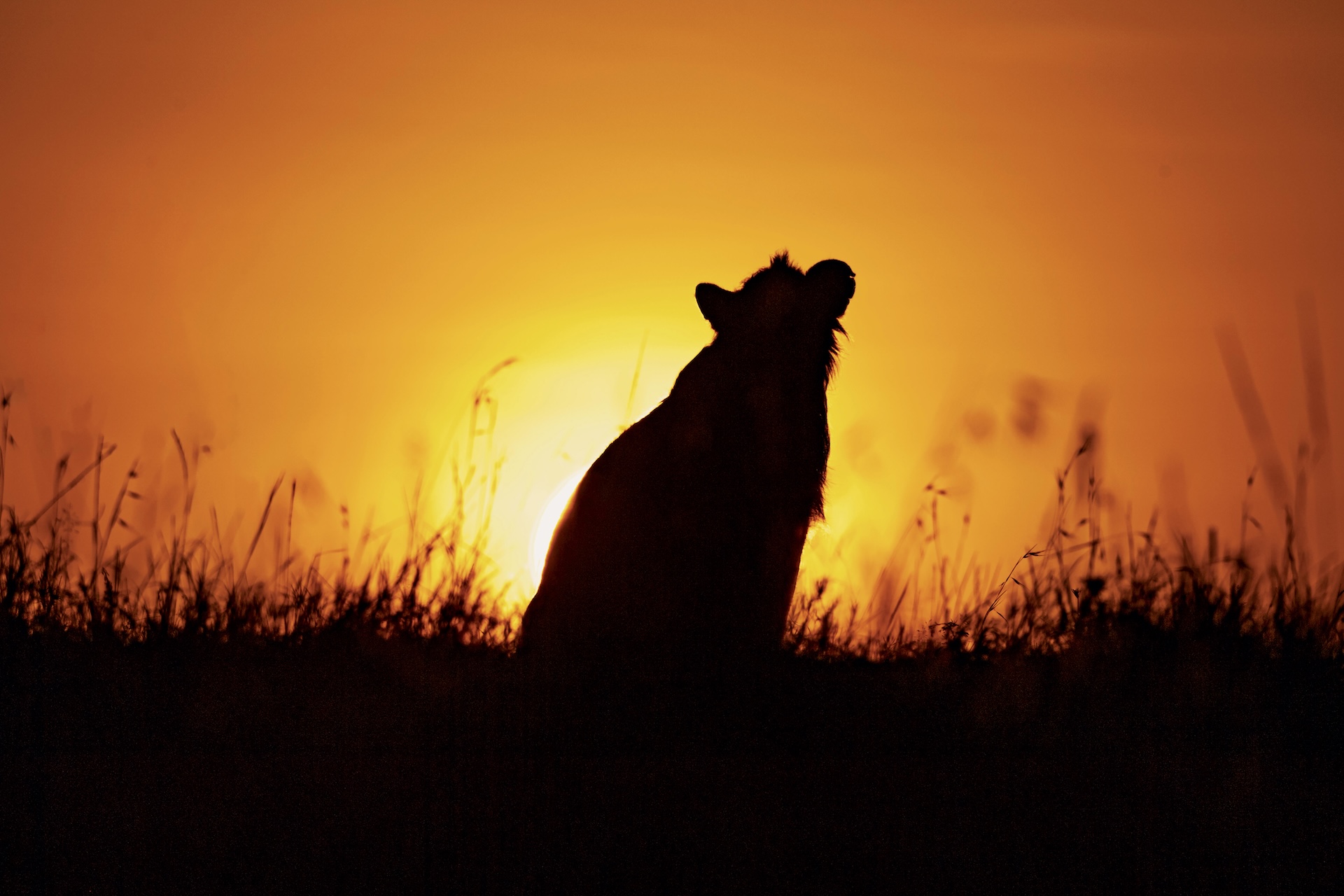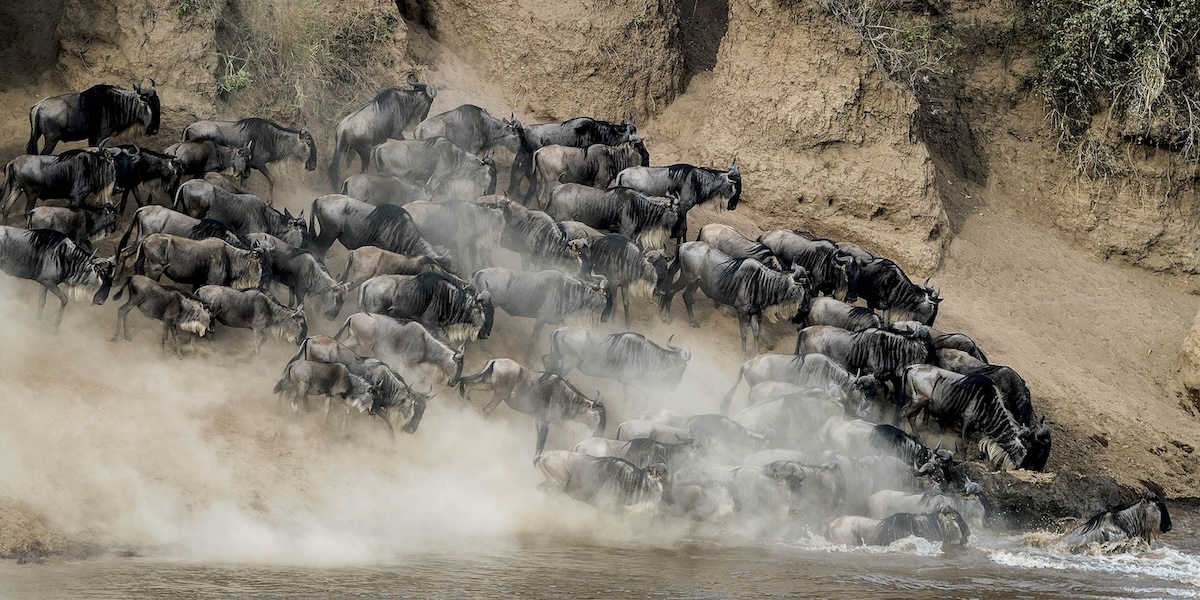The migration of wildebeest in Maasai Mara, known as the Great Migration, is one of the most astonishing natural wonders of the world and takes place annually across the vast savannas between Serengeti National Park in Tanzania and the Maasai Mara Reserve in Kenya. This grand migration involves over 1.5 million wildebeest, hundreds of thousands of zebras, and gazelles moving in huge herds over a distance of more than 2,900 kilometers. The migration is driven by the need for fresh grass and water. When the dry season depletes food resources in the Serengeti, the wildebeest and other herbivores head north to the greener pastures of the Maasai Mara.
This migration is not just a struggle for survival but a continuous cycle of birth and death, which defines the African savanna. During the rainy season in the Serengeti, the wildebeest breed en masse. In just one month, about half a million calves are born on the plains. When the rains end, the grass in the Serengeti is exhausted, and the herds start moving north towards the Mara River, which lies on the border between Tanzania and Kenya. The peak of the migration occurs from July to August when the animals arrive in the Maasai Mara region.
The most dramatic part of the migration is the crossing of the Mara River, notorious for its dangers. Crocodiles lie in wait for the arriving herds, and many wildebeest fall victim to these predators. Not only is the river full of crocodiles, but the swift currents also pose a deadly threat to weakened animals. This river crossing is often captured by tourists’ cameras and represents the climax of the migration. After crossing the river, the wildebeest disperse across the Maasai Mara’s grazing lands, where they feed and stay until they head back south.
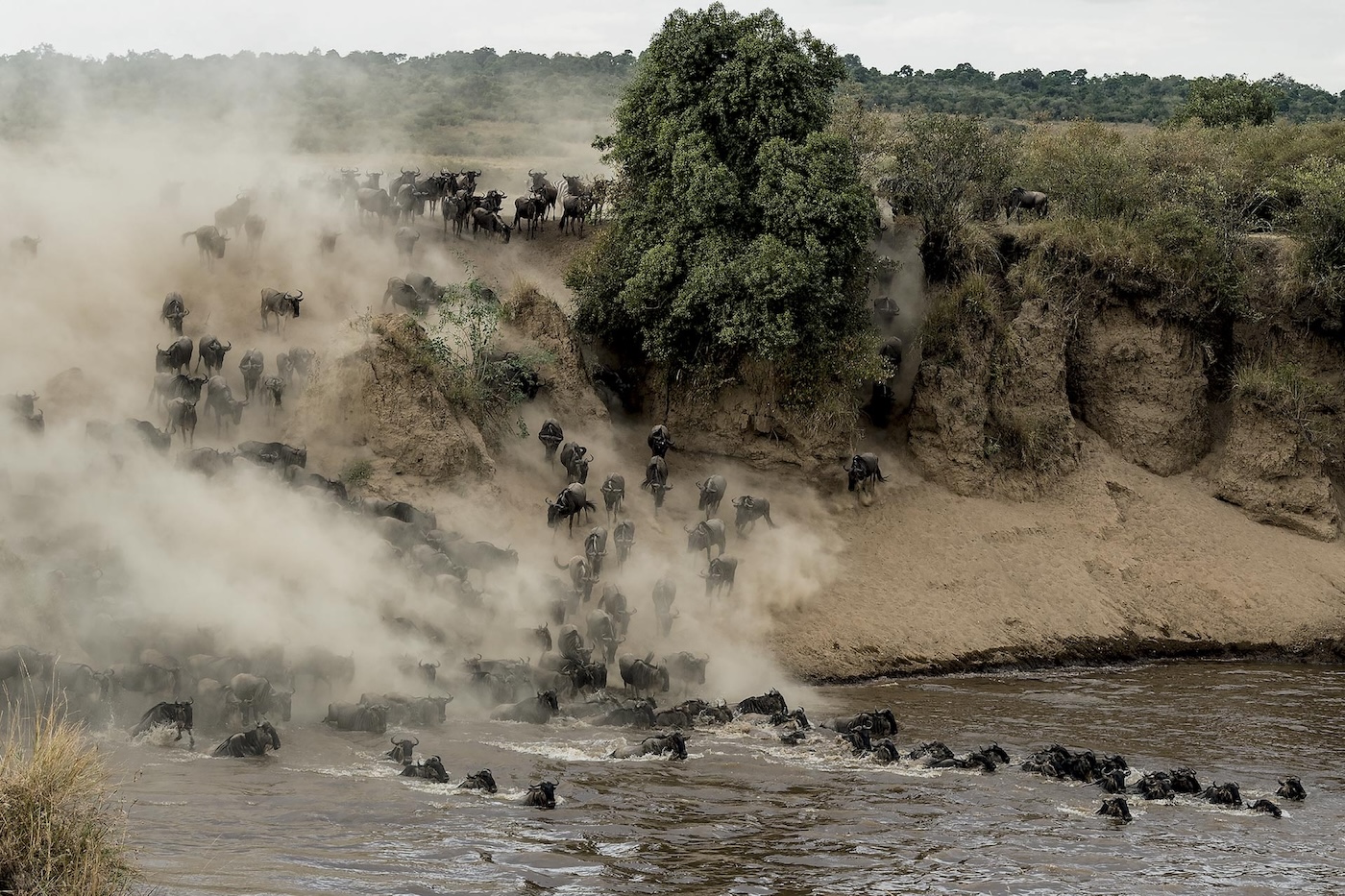
The return to the Serengeti takes place in October and November. With the onset of the autumn rains, the Serengeti comes alive again. The grass begins to grow, and the wildebeest, zebras, and gazelles return south to spend another season in the Serengeti. This cycle repeats every year, offering tourists a unique opportunity to witness these majestic herds.
Ecological importance of the migration
The migration of wildebeest is crucial for the ecosystems of the Serengeti and Maasai Mara. The grazers and other herbivores contribute to maintaining a healthy environment by eating grass and fertilizing the soil, which promotes the growth of new plants. This cycle also keeps the balance between predators and prey. Lions, cheetahs, hyenas, leopards, and other predators rely on the migrating animals as their main food source.
The migration is also of great importance to local communities. Every year, the wildebeest migration attracts thousands of tourists from around the world who come to observe this natural event and the awe-inspiring sight of the animals. The tourism associated with the Great Migration is a vital source of income for local communities and reserves. Maasai Mara is home not only to wildlife but also to the local Maasai tribe, who have lived in harmony with nature for centuries.
For the local people, especially the Maasai, the wildebeest migration holds spiritual and cultural significance. Wildebeest symbolize survival and harmony with nature, and the migration itself represents the cycle of life and death, which is a fundamental part of their cultural heritage.
Facts About the Migration
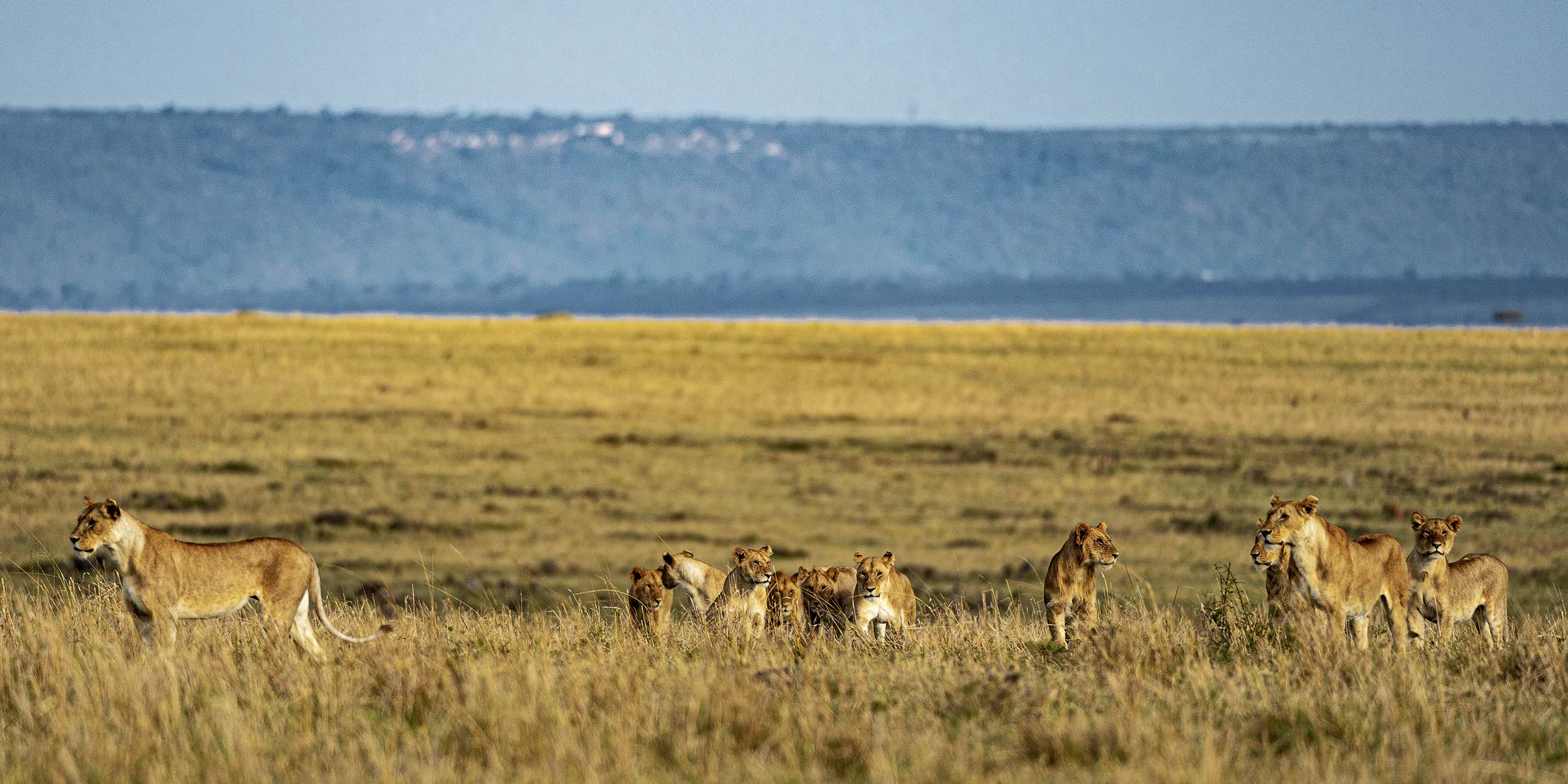
The Great Migration lasts throughout the year but is most visible during the crossings of the Mara and Sand Rivers. In addition to wildebeest, zebras and gazelles also migrate, forming vast herds together. Apart from the crocodiles in the Mara River, the animals are threatened by lions, cheetahs, leopards, hyenas, and the rugged terrain. The Great Migration is a unique experience that offers a dramatic view of African wildlife and its relentless cycle of life.
The battle between crocodiles and wildebeest in the Mara River is one of the most dramatic and iconic scenes during the Great Migration in Africa.
Crossing the river is extremely dangerous, as it is home to some of the largest and oldest crocodiles in the world. The Nile crocodiles (Crocodylus niloticus) inhabiting the Mara River are among the biggest and deadliest predators on the planet. These crocodiles can reach lengths of 5-6 meters and weigh more than 500-600 kilograms. They are excellent hunters, using their size, strength, and patience to ambush their prey. The scene where thousands of wildebeest gather, waiting to cross the river, can last for hours until one brave animal jumps into the water. Once the first herd enters, the others follow in a chaotic and dramatic crossing. The crocodiles, lurking beneath the surface, have been waiting for this moment. Their strategy is based on patience. They lie in wait until the animals begin to cross, then quickly attack the nearest wildebeest or zebra. Crocodiles target the weakest or most exhausted individuals, who have the least chance of defending themselves.
The river crossing is a test of endurance and survival for all the migrating animals. Thousands of animals successfully cross the river, but many fall victim to crocodiles or the river’s strong currents. These attacks are often brutal—crocodiles grab their prey with powerful jaws and pull them underwater to drown. Crocodiles often fight over the body of their prey, adding to the chaos in the river. Though these scenes may seem harsh and cruel, they are an integral part of the natural cycle of African ecosystems.
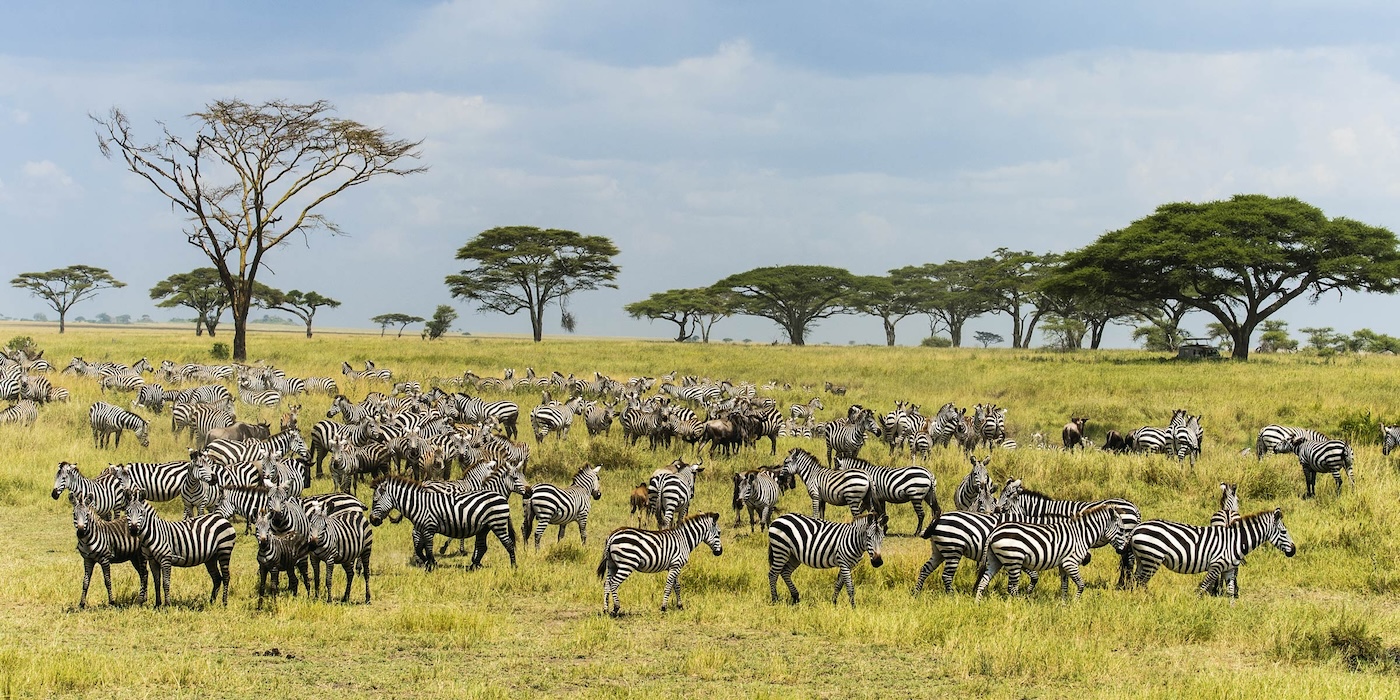
During the migration, crocodiles feast abundantly on wildebeest and zebras, storing energy reserves to help them survive the longer periods without food. For the wildebeest, crossing the Mara River is essential for their survival, as sufficient food and water can only be found on the other side. Despite the dangers the river poses, the herds embark on this perilous journey because they have no other choice. This natural cycle is therefore necessary to maintain the balance of the savanna ecosystem.
